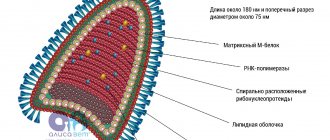Dog neutering is something every responsible dog owner should definitely consider. In modern society there are more and more supporters of animal rights activists calling for birth control. Castration and sterilization are a mandatory procedure for many owners. With its help, unwanted growth of the dog population is restrained, and the risk of negative consequences of “sexual hunting” is reduced. Let's take a closer look at what this procedure is, how to prepare for it and what to do during the recovery period, and consider the pros and cons of castration. We will try to answer all the questions that dog owners have.
What is castration
This is a surgical operation to stop a male dog's ability to reproduce.
In veterinary medicine today there are two methods of sexual dysfunction in dogs:
- Vasectomy - ligation of the seminal ducts. After this medical procedure, the pet loses its ability to reproduce. The hormonal background remains unchanged, attraction to individuals of the opposite sex remains, dogs can continue to mate with females. This method is practiced by breeders who cull males in this way.
- Castration is an operation to amputate the testicles. In males, sexual function completely ceases, they lose the ability to mate and reproduce. Dog owners most often lean toward this method.
In the future, when speaking about castration, we will mean the second method.
Methods
Surgical castration is performed using several methods. Each of them has both pros and cons. The choice depends on the pet owner or medical indications.
- Excision of the testes while preserving the scrotum. This method is the most preferred. It is used in most veterinary clinics.
- Amputation or scrototomy, this operation involves removing the entire scrotum. This method is recommended in cases of tumors appearing in the dog’s genital area.
- Vasectomy or interruption of seminiferous tubules.
The choice of castration method is based on the condition of the animal, which must be assessed by a qualified doctor.
Frequently asked questions from dog owners
They say that castration cannot be done if the male dog has never “walked”. This is true?
No. Everything is exactly the opposite - it is best to carry out the operation before the first mating.
Will castrating a dog help against house marking?
In most cases this helps. In addition, the smell of urine becomes less intense. The exception is males who were castrated at a late age (from 2 to 7 years). An adult dog may retain the habit of marking its territory.
What to do if the dog does not pee after castration?
After anesthesia, some dogs experience a serious complication - anuria (the inability of the kidneys to produce urine). This is a very serious condition that can lead to a sad outcome. It is imperative to take your dog to a veterinarian for examination and to receive a recommendation for treatment.
How long does it take for a dog to recover from anesthesia after castration?
The time to recover from anesthesia varies for each dog. This depends on the age of the pet, its health condition and the type of anesthesia. On average it takes from 3 to 7 hours. During this time, someone must be with the operated dog.
They say that after castration, dogs lose aggression. Tell us how the behavior of castrati changes?
Partially. Competitive aggression in dogs – the fight for the female – disappears. But, they also guard their territory and can be aggressive towards strangers. If the dog’s aggression was not related to sexual desire, he will not change his behavior.
Is it possible to perform surgery on animals older than 7 years?
Yes. According to indications. It happens that dogs in old age suddenly begin to mark the territory in the house. To save the owners from this trouble, they resort to surgery.
Is castration surgery performed on dogs under local anesthesia?
No. Such operations are not performed on male dogs. For a number of serious reasons:
- Local anesthesia does not numb the testis and spermatic cord. The animal will experience severe pain, which can lead to injury to the dog and person, as well as painful shock.
- The animal will experience severe stress and will try to escape.
- Against the background of stress and pain, a sharp jump in blood pressure is possible. This will cause additional blood loss.
If a clinic offers you a castration procedure without general anesthesia, look for another clinic.
Advantages and disadvantages
The main advantage of castration is the reduction in the reproductive capacity of the animal. This action relieves the owner of the need to organize mating and search for a new home for the puppies.
In addition, the advantages include:
- reduction of aggression towards other animals;
- the pet’s character becomes more balanced, its behavior is calm and consistent;
- eliminates the need to mark territory;
- the risk of diabetes mellitus is reduced;
- The possibility of oncological diseases of the genital organs, in particular the testicles or ovaries, is removed.
Surgery has both pros and cons. The latter points include:
- negative effects of general anesthesia, including death;
- increased susceptibility to gaining excess weight;
- There may be problems with the heart or blood vessels.
In addition to the listed risk factors, neutering a male dog can lead to cancer of the genitourinary system.
At what age should a dog be neutered?
Veterinarians, dog shelter staff and professional breeders have still not reached a consensus on the age of castration of dogs. Moreover, domestic veterinarians and foreign experts are still arguing about this. Some preach early removal of the ovaries. Others are proponents of late castration.
Workers at homeless animal shelters and veterinarians who collaborate with these organizations are inclined towards early castration. He is concerned about the problems of abandoned animals. Early castration helps to place a dog from a shelter into a family - such pets are more readily adopted. This guarantees that the male will not have time to mate accidentally. The puppy must be at least 2 months old.
Dog breeders tend to opt for a later date for the operation – 14 months and older. They argue that the hormonal background of a male dog is responsible for growth and bone density. Castration too early can lead to serious problems with the formation of the dog's skeleton. Late castration is recommended for sports dogs and animals predisposed to the development of osteosarcoma.
If we summarize all the opinions and calculate the average age recommended for this procedure, we get 6-12 months. It is at this age that a male dog’s genitals are fully formed, and the hormonal background is ideal for surgery.
Important! Do not “untie” your dog before surgery. Dogs that have not walked can tolerate the procedure better and recover faster after it.
What happens if you castrate at a different age?
- Early castration (2-6 months) can lead to delayed development of the puppy . Such individuals behave like a puppy for a long time and do not mature.
- Neutering of large and giant breed dogs before 12 months of age disrupts normal bone growth, resulting in “long-legged” bones. Such male dogs are more likely to have hip dysplasia.
- If the procedure is carried out at the age of 2 to 7 years, then male dogs may retain all the behavioral characteristics associated with “sexual hunting” and marking of territory.
The decision about the age of the animal at which the procedure will be performed should be made by the owner in consultation with his veterinarian. When making this important decision, the dog’s age, breed, health status and genetic parameters are taken into account.
Behavior of castrated dogs
Even after parting with the genitals, the dog will not immediately stop feeling attracted to the opposite sex. For psychological adaptation after surgery, time must pass, in some cases up to a year.
Behavioral correction concerns more young dogs. And it is connected not only with the operation, but also with education. An adult dog with already established habits and a fully formed character will not change much after castration.
Many owners notice a decrease in their pet's aggression. Libido really directly affects the character of male dogs, stimulating them to show their authority. Neutering will eliminate this problem, making the dog more balanced.
Is it worth doing?
To answer this question, weigh the pros and cons.
pros:
- Castration prevents unwanted reproduction.
- Mood stabilizes. Competitive aggression is reduced.
- Males stop running away in search of a female.
- Dogs stop getting into fights over females.
- After castration, the dog’s behavior becomes more manageable, and the attention of the neutered pet switches from other dogs to the owner.
- Undesirable manifestations of sexuality are reduced or completely disappeared. Males stop pestering your feet, soft toys, and other pets “like an adult.”
- Males stop marking their territory or do it much less often.
- The likelihood of prostate diseases is reduced.
- Prevents the development of testicular cancer in old age.
- The risk of developing a perianal fistula is minimized.
Consequences (cons):
- Risk of developing obesity. The owners need to change the dog’s feeding regimen after surgery, reduce the caloric content of food and the portion size. To reduce this risk, it is important to provide your pet with adequate physical activity.
- The risk of developing cardiac hemangiosarcoma, a fatal cancer of the blood vessels, increases.
- The likelihood of thyroid disease – hypothyroidism – increases.
- The risk of oncological pathologies increases: urinary tract cancer and prostate cancer.
- In old age, it is possible to develop progressive geriatric cognitive impairment: dementia, spatial disorientation, memory loss.
- If the operation is performed at an early age (before 12 months), the risk of developing osteosarcoma (bone cancer), ligament ruptures and hip dysplasia increases.
- Risk of developing an atypical reaction to vaccination.
- Early castration (before 6 months) inhibits the development and growth of male dogs.
- The texture and growth pattern of the coat may change.
- Early castration can lead to senile urinary incontinence. This occurs in cases where the operation is performed before the bladder has fully developed.
Important!
The decision on the need for surgery must be balanced and responsible. The owner is obliged to evaluate all the pros and cons before agreeing to the operation.
When is surgery necessary?
These questions will help you decide:
- Has your male dog been diagnosed with cryptorchidism (undescended testicle in the scrotum)?
- Is there a real risk that your dog will mate with an unspayed female?
- Does your dog belong to the following breeds: Irish Setter, German Shepherd or Leonberger (breeds prone to developing perianal fistula)?
- Do you often go with your dog in places where there are other male dogs?
- Does your dog have pronounced behavioral problems: is he actively marking his territory, is he aggressive, does he “attach” to your legs, is he more interested in other dogs than in you? And this cannot be corrected through training and education?
Did you answer at least one question positively? Castration will be the right decision!
How to prepare a dog for castration?
Castration is considered a simple medical procedure, but it is still a surgical intervention in the animal’s body. In addition, it is performed under anesthesia. Therefore, before deciding to perform an operation or choosing a time frame for it, it is necessary to consult a veterinarian and perform a number of preparatory measures.
Preparatory procedures:
- Anthelmintic and anti-flea treatment 2-3 weeks before the intended procedure.
- Vaccination. All vaccinations for puppies must be completed no later than one month before surgery. This is due to the fact that antibodies are produced within two weeks.
- Preventive examination at the veterinary clinic. The operation is performed only on healthy male dogs.
- Laboratory tests: general blood test, biochemistry, urine and stool analysis.
- Anti-stress measures. Sedatives 2-3 days before the procedure.
- Bathing with flea shampoo and antiseptic the day before surgery.
- Laxatives the day before castration.
- Fasting 12-16 hours before surgery.
- Access to water is stopped 4 hours before the procedure.
- Premedication – preparing a dog for anesthesia. Technology may vary from clinic to clinic.
- Selection of the type of anesthesia for medical reasons.
For medical reasons (age, condition of the dog), an electrocardiogram, echocardiography (ultrasound of the heart) and a chest x-ray may be additionally prescribed.
Important!
Do not agree to an operation without a premedication stage (preparation for anesthesia) - without this stage there is a high risk of developing severe complications.
Video about preparing for surgery:
Pros and cons of castration
Before deciding to take this step, you need to weigh the pros and cons.
Castration of dogs, advantages:
- Total disposal of unwanted puppies. Believe me, it is better to solve the problem radically than to place the kids in shelters or, even worse, to get rid of them.
- The dog's unnecessary agitation and aggression disappear, and his mood is stable.
- Dogs do not run away from their owners in search of a potential partner, and also do not fight over him.
- Your pet listens better, the relationship becomes closer.
- There are no unpleasant odors after the marks.
- The risk of prostate disease and ovarian cancer is reduced.
Disadvantages of castration of dogs:
- The dog is capable of gaining a lot of weight. But this can be controlled by walking more and eating less.
- There may be some health issues: thyroid disease, oncology in the genitourinary system and blood vessels.
- In old age, a dog may acquire dementia, or memory loss and disorientation in space.
- The texture and growth of fur changes.
- And a few words about the disadvantages of early castration: possible bone diseases (even cancer), urinary incontinence in old age, as well as the risk of a delayed infantile state of the dog. Simply put, an early neutered dog can behave like a stupid puppy all his life.
How does the operation take place?
The type of anesthesia must be selected by a veterinarian at the preparatory stage.
The following types of general anesthesia are used in veterinary medicine:
- Intravenous . The most effective and safe anesthesia with minimal risk of complications.
- Intramuscular . Inexpensive way. Most often used.
- Inhalation . Rarely used, high price, only possible in a hospital setting.
Additionally, local anesthesia of the incision site and testicles of the animal can be performed.
The male dog is placed on a sterile surface, fixed and anesthetized. The veterinarian makes sure that the dog has lost sensitivity. After this, he removes the hair at the incision site and disinfects it.
The doctor then cuts the scrotal area with a sterile scalpel and ties the spermatic cord with self-absorbable surgical suture. This is necessary to prevent bleeding.
After this, the testis (testicle) is excised and removed with a scalpel. The veterinarian performs similar surgical procedures on the second testis.
Next, the surgical area is dried with a sterile medical napkin and treated with an antiseptic spray or powder. In veterinary medicine, Ranosan, Tricillin, etc. are used.
Depending on the size of the dog, a decision is made to apply postoperative sutures. For small breeds, seamless technology is used. For large male dogs, the scrotum is additionally sutured or cut off, and sutures are placed using self-absorbing threads. After the wound heals, the dog will have an invisible scar.
Read also
Cystitis in dogs: symptoms and treatment
Cystitis is a type of genitourinary tract infection that affects the bladder
Fleas on a dog. How to withdraw?
Fleas can cause a lot of discomfort and suffering to your animals, but they must be removed very carefully
Worms in dogs: Signs, symptoms and treatment
The presence of worms in domestic dogs is a widespread phenomenon. Many worms found in our animals are also dangerous for humans.
Ear mites in dogs: Symptoms and treatment of otodectosis
Otodectosis or ear scabies is a chronic invasive disease caused by microscopic itch mites.
Proper nutrition for dogs. Diet selection from a veterinarian
In order for your dog to be healthy, active and live for many years, you need to choose the right diet in combination with physical activity and vaccinations.
Caring for your dog after castration
After the operation, the dog will be under the influence of anesthesia for several more hours. Release time is individual. The owner or staff of the clinic must be close to the operated animal.
The dog is placed on a waterproof oilcloth - for the first hours after anesthesia, the animal’s urethra is relaxed and cannot hold urine. The animal's pulse and respiratory rate are checked.
After the dog stops urinating on itself, it can be transferred to a clean cotton bedding. Place it on the floor so that the animal does not accidentally fall. During the period of recovery from anesthesia, the male dog will have impaired coordination. Don't leave him alone!
There is no need to offer water or feed immediately after recovery from anesthesia. This can be done a few hours after surgery. Ask the doctor who performed the castration when is the best time to do it. It is not scary if the animal refuses to eat for the first 2 days after surgery.
Postoperative period and wound care
- There is no need to apply bandages to the surgical area. Healing occurs faster in the open air.
- Use an Elizabethan collar if the animal tries to lick a wound.
- If the surgical area is red or swollen, it is treated with Chlorhexidine (a liquid antiseptic).
When is an urgent need to contact a veterinarian?
If the condition of the wound or your pet worries you, take it to the veterinarian.
Indications for urgently calling a doctor:
- The male refuses to eat for more than 2-3 days.
- In the first 24 hours after the procedure, a high temperature rises.
- The dog is breathing heavily, his oral mucosa has turned red or pale.
Video - care after surgery:
Location
Castration can be carried out at home with a call from a veterinarian, or in a veterinary hospital. The main condition for a normal operation is a qualified doctor. You should not risk the health of your pet by turning to unprofessional doctors or trying to castrate the animal yourself.
Castration of dogs at home is quite possible, especially if there are indications for this. But still, doctors strongly recommend castration to be carried out in a veterinary clinic. This is due to the fact that veterinary clinics have specialized equipment necessary to reduce the risks and negative consequences for the animal’s body to a minimum when dangerous, critical situations arise. Castration of dogs lasts on average from 20 to 45 minutes for males and 50-120 minutes for females.
Complications after surgery
Castration is a surgical procedure performed under general anesthesia. As with any other operation, complications and individual reactions are possible.
Postoperative complications that require veterinarian intervention:
- Uncontrollable vomiting. If the dog vomits once and not profusely, just make sure that the pet does not choke on the vomit.
- Long-term recovery from anesthesia (more than 6-7 hours).
- Prolonged hyperthermia – the temperature stays above 39°C for more than 2 days.
- Hypothermia (body temperature below 37°C).
- Seams coming apart. Often occurs in large dogs.
- Abscess in the postoperative area - purulent discharge from the wound. Accompanied by increased body temperature, weakness, apathy, refusal to eat and drink.
- Thread-like pulse - barely palpable.
- Pale or bluish mucous membranes.
- Heavy breathing, shortness of breath, wheezing.
Important!
Someone must be with the dog throughout the entire postoperative period. When the first alarming symptoms appear, an urgent call to the veterinarian’s home is necessary.
Preoperative period
There are a number of recommendations to properly prepare the animal for the upcoming operation. First of all, the dog must be physiologically healthy, defecate regularly, and have a good appetite. If you doubt the health of your pet, it is advisable to first undergo an examination by a veterinarian. Additional blood tests, urine tests, and an electrocardiogram may be ordered.
Deworming plays an important role in proper preparation for surgery. Veterinarians advise treating your pet for helminthic infestations every 3 months. If deworming was not carried out in a timely manner, it is important to give anthelmintics 10 days before the planned operation.
The mandatory list of requirements for proper preparation for deworming includes routine vaccination. You need to regularly vaccinate your pets against various infectious diseases. At least 4 weeks must pass from the last vaccination before castration.
Note! It happens that owners are categorically against vaccinating their pets. In this case, before castration, veterinarians recommend administering a special serum that will protect the dog during the postoperative period for 2 weeks from possible infection.
Fasting for 12 hours is a necessary measure, the observance of which will allow you to avoid complications during the operation to remove reproductive organs and recovery from anesthesia. A starvation diet will not harm the body, since dogs are predators and fasting for 3-4 days is not dangerous for the animal.
Is it worth castrating at home?
Most veterinary centers offer. The procedure is not very complicated; the doctor can take everything necessary with him to the call.
Preparatory measures for this method of surgery are the same as for castration in the clinic. A preliminary examination of the animal and consultation with a doctor are mandatory. Next, we will talk about the features of preparing for the procedure, its pros and cons, to make it easier for you to make a decision.
Features of preparation:
- You need to prepare a clean room at home. It is best to clean the bathroom with disinfectants - complete sterility does not need to be achieved.
- A table is installed in this room for the surgeon to work. Its surface is disinfected.
pros:
- Contact with other animals is excluded. This is more difficult to achieve in the clinic.
- The pet is calmer in a familiar environment. There is no stress that the dog gets when traveling to the clinic.
- The postoperative period is easier in familiar home conditions.
- There is no need to waste time and money traveling to the clinic.
- The doctor arrives at a time that is convenient for you.
Minuses:
- At home, there is no opportunity or necessary equipment to carry out resuscitation measures.
- It is impossible to achieve complete sterility.
- The cost of in-home surgeries may be higher.
Prices:
Russia
- Moscow and St. Petersburg - from 3,000 to 7,000 rubles.
- Regions of Russia – from 2500 to 6000 rubles.
Ukraine
- Kyiv – from 450 to 1850 UAH.
- Regions of Ukraine – from 350 to 800 UAH.
Where is it better: at home or in the veterinary clinic?
The choice of venue for the event depends on the individual characteristics of the animal. Familiar territory is suitable for shy pets. At home, you can watch the process and talk to your veterinarian. It also eliminates contact with four-legged visitors to the veterinary clinic and stress during transportation.
Among the disadvantages of home surgery, it is worth noting the lack of complete sterility. There is not all the necessary equipment at home, so the doctor will only perform abdominal surgery, and in case of complications, he will not be able to provide resuscitation care.
Alternative methods of castration
Classical surgical castration is used everywhere - it is the most common, effective and safe method. However, modern medicine offers dog owners other methods.
Alternative methods:
- Vasectomy (sterilization). We talked about this method at the beginning of the article. It involves ligating the seminal canals. The method deprives male dogs of the opportunity to reproduce, but does not deprive them of sexual desire.
- Chemical castration (medical). Temporary and expensive procedure. It consists of inserting an implant under the animal’s skin, which suppresses the male’s sexual desire. In domestic veterinary practice, the drug Suprelorin is used.
Indications and contraindications
Before deciding to castrate your male dog, it is recommended that you familiarize yourself with the possible consequences. An important aspect is the health of the pet. Therefore, before surgery, the dog is thoroughly examined, which helps to identify possible risks.
Indications for castration of an animal include the following factors:
- reduction of sexual desire to improve the working qualities of hunting dogs and dogs used for protection;
- elimination of reproductive functions and their consequences in the form of unwanted offspring;
- medical indications, primarily neoplasms on the organs being removed;
- decreased level of dominance and aggression in males;
- troubleshooting problems with territory tags;
- correction of behavior in animals of both sexes.
Contraindications include:
- kidney disease;
- problems with blood vessels or heart;
- not reaching puberty;
- exhaustion or dystrophy;
- period of scheduled vaccination.
From a medical point of view, castration is possible until the dog reaches adulthood. But there is meaning in surgery on an adult male dog only in the case of specific diseases.
Owner reviews
Dinara : “Our Yorkie began to show interest in soft toys from the age of 5 months. He was ready to constantly pester them. At first it made me smile, then it became annoying. The child constantly asked uncomfortable questions. My husband was against castration, but I insisted on this procedure. Made at home. The dog recovered from anesthesia in 2.5 hours. Then we wore a special plastic collar for another two weeks to prevent it from licking and tearing the wound. I treated the seam myself with Chlorhexidine. The dog became several times calmer after castration. Now the dog is not interested in toys and barks much less often.”
Leonid : “Castration is an excellent method of dealing with marks. If a puppy or adult dog marks its territory not only on the street, but also in the apartment, there is only one way out - surgery. Yes, I know many people do not approve of this surgical method, but the benefits are real. I convinced myself when I adopted a two-year-old dog from a shelter. I don't know why the shelter didn't neuter him. He marked all the corners. Scold, don't scold - there was no point. I had to take him to the vet. He advised us this method. The operation went quickly. The rehabilitation was short-lived. The dog did not stop marking immediately. It took some time for his hormonal levels to change. But after a few months we forgot about this problem.”
Preparing for surgery
Once you have done all your previous research and have decided that spaying is necessary for your pet, make an appointment with your veterinarian.
It may also be helpful to take the day of surgery and the next day off so you can be with your dog. You should reschedule any potential meetings at home, as your dog should be able to rest in peace and quiet after neutering.
Like humans, dogs must have an empty stomach before surgery under anesthesia. Therefore, limit your dog's access to food 12 hours before the castration procedure and give him even more water than usual.
How castration works: description of the procedure
Castration is carried out as follows: first, the dog is placed on a sterile operating table. The animal is given anesthesia. The fur is shaved off from the site of the future incision. The surgical field is treated with an antiseptic. An incision is made in the groin or scrotum area. The genital organs are removed. The incision site is sutured and re-treated with antiseptic liquid.
The duration of the operation depends on the gender of the dog. For males, castration takes ten minutes, for females forty minutes. Removal of sutures is not required for males; sutures are removed for females two weeks after castration.
When should you spay or neuter your puppy?
Dogs of different breeds and sizes reach puberty at different ages. You should discuss the appropriate age for spaying or neutering your puppy with your veterinarian. He will assess the puppy’s health, degree of development and readiness for the procedure. Some studies indicate that spaying and neutering a puppy after it has reached sexual maturity is better for its health.
There is no need to worry if you have adopted an adult dog that has not been spayed or neutered. The procedures can also be performed in adults. Just like a puppy, an adult dog will first need to be seen by a veterinarian to determine when it is best to have surgery (for example, in females, it is important to take into account the cycle to avoid complications).











